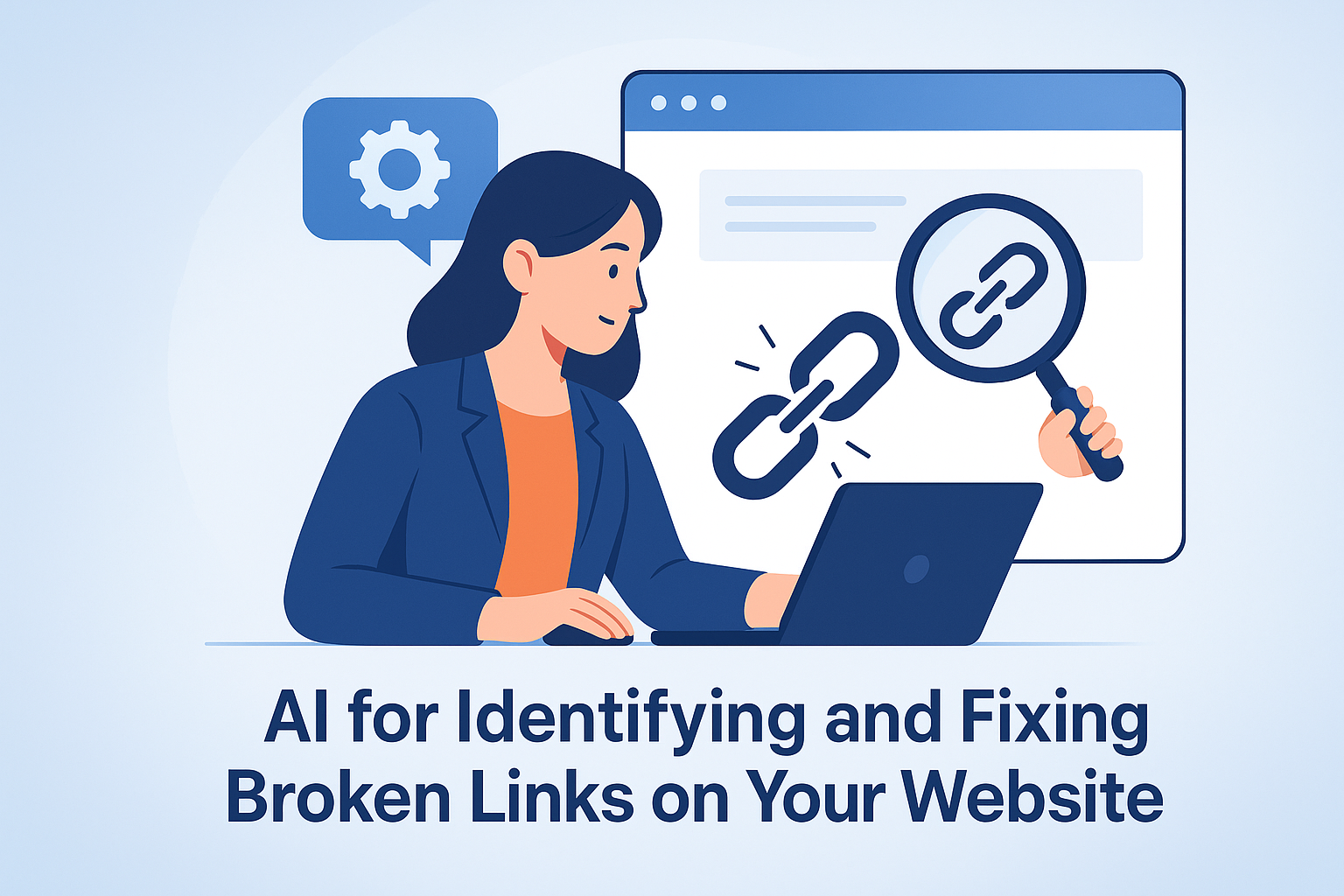Mobile traffic now accounts for over 60% of all website visits—and Google has made it clear: mobile-friendliness is a ranking factor. But it’s not enough for a site to just look good on mobile. It needs to perform well across all devices and screen sizes, from phones and tablets to foldables and phablets.
Mobile-friendliness isn’t just about responsive design anymore. It’s about performance, accessibility, layout clarity, load speed, and behavioral alignment with how users actually engage on mobile.
In this guide, we’ll show you how to use AI-powered SEO tools—especially DIYSEO GPT’s pre-built expert prompts—to ensure your site is mobile-friendly across all devices. You’ll also learn how to use the SEO AI Writer and Link Marketplace to reinforce mobile optimization through content and authority building.
Why Mobile-Friendliness Impacts SEO
Google’s mobile-first indexing means that the mobile version of your website is what determines your rankings. If your mobile experience is slow, cluttered, or unoptimized, you’re leaving rankings and revenue on the table.
Mobile-friendliness affects:
- Page speed and Core Web Vitals
- User engagement and bounce rate
- Indexation accuracy
- Crawl prioritization
- Local and voice search performance
Mobile UX = SEO performance. And AI can help you fix it—quickly and efficiently.
What “Mobile-Friendliness” Really Means in 2025
Being mobile-friendly includes:
| Factor | Description |
|---|---|
| Responsive design | Content adapts fluidly to screen size |
| Load speed | Optimized for 4G/5G and weaker networks |
| Tap target sizing | Buttons/links are easy to tap with fingers |
| Minimal layout shifts | Content doesn’t jump on load |
| Accessible structure | Clean headings, readable fonts, ARIA labels |
| Behavioral match | Structure reflects how mobile users scroll, tap, and navigate |
These aren’t cosmetic details—they are measurable and actionable with the right AI-powered insights.
How DIYSEO Uses AI to Guarantee Mobile-Friendliness
Unlike traditional SEO tools, DIYSEO GPT comes pre-loaded with agency-level prompts, crafted by professionals to surface mobile issues using your first-party data from Google Search Console, and enhanced by SEMrush and Moz where needed.
✅ Prompt: Mobile Performance
This prompt identifies how well your website performs across mobile devices. It draws directly from Google Search Console and flags:
- Pages with low mobile click-through rates
- Mobile usability errors
- Device-specific performance issues
- Mobile vs. desktop performance comparisons
After selecting Mobile Performance, the DIYSEO GPT automatically analyzes your top landing pages to surface optimization opportunities. You can then follow up in the Chat History panel to clarify action steps, such as:
- Which pages have mobile layout issues?
- Are there critical Core Web Vitals problems?
- How do I prioritize mobile fixes?
✅ Prompt: Layout & Readability Review
This prompt focuses on how users experience your content on mobile, specifically targeting:
- Font size, spacing, and heading structure
- Tap target accessibility
- Paragraph length and readability
- Navigation usability and CTA visibility
Using this insight, you can ensure your content is legible, actionable, and engaging on even the smallest screens.
You’ll also uncover common mobile-specific issues, like:
- Button stacking that interferes with usability
- Overuse of side-by-side columns
- Misaligned hero sections that cut off CTAs
✅ Prompt: Indexation Overview
A mobile-unfriendly site may prevent Google from indexing key pages. With this prompt, DIYSEO GPT checks:
- Whether your mobile content is being properly crawled
- If mobile-only URLs are getting excluded
- Whether you’re suffering from mobile-specific render-blocking resources
When paired with Top Exclusion Reasons and Crawled Not Indexed, this creates a complete picture of whether your mobile-first strategy is succeeding.
Content Optimization for Mobile with SEO AI Writer
Once the mobile performance issues are identified, it’s time to adapt your content. The SEO AI Writer is built to create SEO-optimized, mobile-friendly content fast.
Use it to:
- Rewrite long paragraphs into mobile-skimmable blocks
- Insert mobile-optimized FAQs that expand/collapse
- Craft intro paragraphs that surface the value proposition quickly
- Auto-generate call-to-action (CTA) blocks that are short, tappable, and above the fold
Example Prompt:
“Rewrite the first two paragraphs of this landing page to be concise, mobile-friendly, and CTA-driven. Target keyword: AI content strategy.”
The SEO AI Writer will return tightly structured, SEO-aligned content designed for scanning and tapping, not desktop scrolling.
Best Practices for Mobile Optimization (AI-Powered)
Use the following checklist alongside your DIYSEO GPT prompts:
| Mobile Optimization Task | Tool to Use |
|---|---|
| Identify mobile CTR & usability issues | Mobile Performance |
| Improve readability and layout | Layout & Readability Review |
| Ensure mobile URLs are indexed | Indexation Overview |
| Rewrite long content blocks | SEO AI Writer |
| Create mobile-friendly CTAs | SEO AI Writer |
| Improve link equity for mobile content | Link Marketplace |
Use the Link Marketplace to Strengthen Mobile-Friendly Pages
After optimizing your mobile content and navigation, you’ll want to build authority to those newly optimized pages.
The DIYSEO Link Building Marketplace gives you access to:
- 30,000+ publisher sites
- Filters for Domain Authority, traffic, TLD, niche, and price
- Ability to promote pages with improved mobile UX
- Savings of up to 75% over traditional agency link-building
Example Use Case:
You optimize your “AI SEO Services” page for mobile using the prompts above. Next:
- Navigate to the Link Marketplace
- Filter by “Digital Marketing” or “Tech” niche
- Choose domains with high mobile traffic
- Secure backlinks to boost rankings for the newly optimized mobile page
Real-World Application: From Audit to Improvement
Step 1: Run the Mobile Performance prompt
Step 2: Review flagged pages with poor mobile CTR or usability
Step 3: Use Layout & Readability Review to diagnose spacing, font, and link issues
Step 4: Rewrite content using the SEO AI Writer
Step 5: Ensure indexing via Indexation Overview
Step 6: Build links via the Link Marketplace to reinforce those improvements
Within days, you’ll see measurable gains in:
- Mobile user engagement
- Indexation rate
- Time on page
- Bounce rate
- Google mobile search visibility
Final Thoughts
In a mobile-first digital world, every second, scroll, and tap counts. If your site isn’t mobile-friendly across all devices, you’re handing traffic and rankings to competitors.
With DIYSEO’s integrated AI tools, you can:
- Diagnose mobile UX issues with professional-grade prompts
- Adapt and rewrite content with the SEO AI Writer
- Promote your most mobile-optimized pages through the Link Marketplace
All without guessing, writing your own prompts, or juggling multiple tools.
Mobile SEO used to be technical. Now, with DIYSEO, it’s automated, scalable, and built for results.
Frequently Asked Questions
1. What is mobile-friendliness and why is it important for businesses today?
Mobile-friendliness refers to a website or application’s ability to work smoothly and effectively on a variety of mobile devices such as smartphones and tablets. This is crucial in today’s digital age where mobile internet usage has surpassed desktop usage. A mobile-friendly site is designed to resize and reformat automatically for all mobile and tablet screens, making it easy for users to navigate and interact with content. Businesses that prioritize mobile-friendliness can enhance user experience, reduce bounce rates, and improve search engine rankings. By ensuring that all potential customers — no matter what device they use — can easily access and interact with their content, businesses can reach a wider audience and drive more conversions.
2. How can AI help ensure mobile-friendliness across different devices?
AI can play a pivotal role in ensuring mobile-friendliness by leveraging machine learning algorithms and deep learning techniques. AI can analyze massive amounts of user interaction data across different devices and create adaptive design solutions. It can auto-generate adaptive web designs that adjust according to the screen size, making sure that all elements are appropriately aligned, sized, and formatted for easy navigation. AI can also simulate how users interact with sites on various devices, anticipating issues and offering real-time optimization suggestions, helping developers create responsive designs that cater to the potential usability quirks of any device.
3. What are the challenges businesses face without AI in creating mobile-friendly websites?
Without AI, businesses face several challenges when trying to ensure mobile-friendliness. The most significant challenge is the sheer diversity of mobile devices, each with different screen sizes, resolutions, and operating systems. Manually optimizing a website for each possible device is not only time-consuming but also prone to human error. This approach requires frequent updates and testing to ensure compatibility with new devices and screen formats. Additionally, user behavior is unpredictable and constantly evolving, making it difficult for traditional methods to forecast and adapt adequately. As a result, websites can become outdated or fail to deliver a consistent and smooth user experience across devices.
4. How does AI improve the UX for mobile users specifically?
AI enhances user experience (UX) for mobile users by personalizing interactions and streamlining navigation tailored to user preferences and behaviors. Machine learning can analyze how users interact with mobile sites and applications, identifying trends and patterns to suggest more intuitive layouts and content placement. AI also enables features like voice search optimization, enhancing accessibility for users who interact with devices using speech or other assistive technologies. Personalized content solutions driven by AI can significantly reduce loading times and deliver the most relevant content, enhancing engagement and satisfaction. By predicting user intent, AI smooths out the interaction process, cutting down unnecessary clicks and steps, leading to a more enjoyable and efficient mobile experience.
5. Are there any limitations to using AI for ensuring mobile-friendliness?
While AI offers numerous advantages in enhancing mobile-friendliness, it is not without its limitations. For instance, developing AI systems requires substantial upfront investment in terms of time, money, and expertise. The success of AI-driven solutions depends heavily on the quality and volume of data available for training algorithms. Poor or incomplete data can lead to less effective optimization solutions. Furthermore, AI predictions and suggestions need continuous monitoring and tuning by human overseers to prevent and correct biases that may inadvertently affect user experience. Lastly, AI technologies need compliance with data privacy and protection laws, which can be complex and vary significantly across regions and industries, further complicating implementation.



